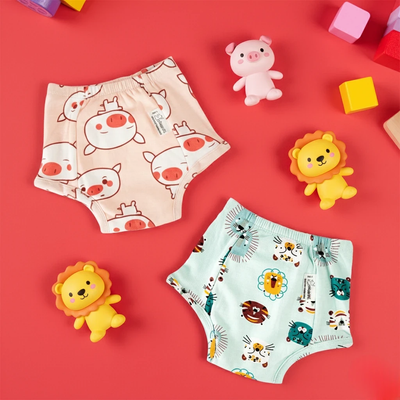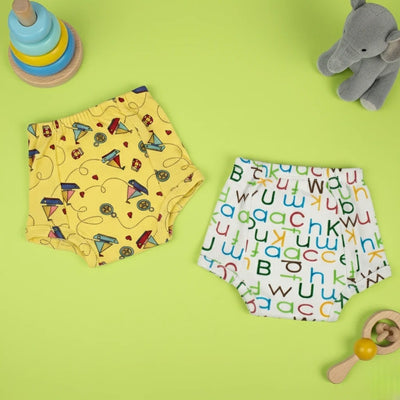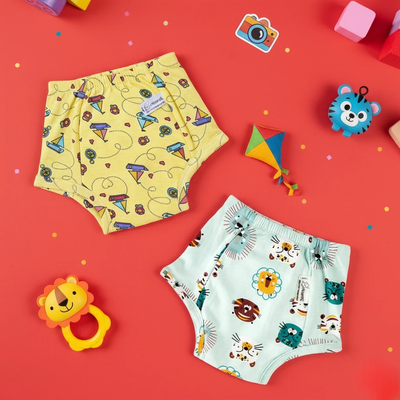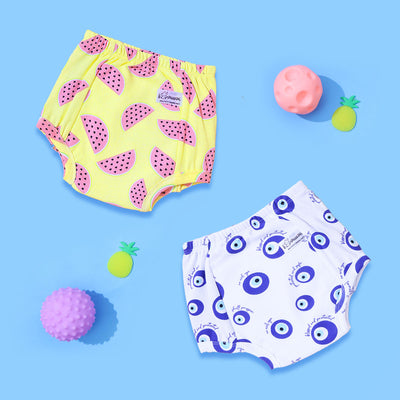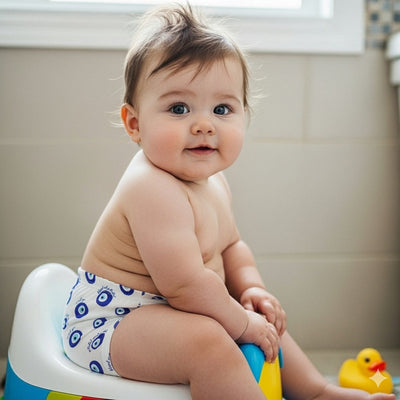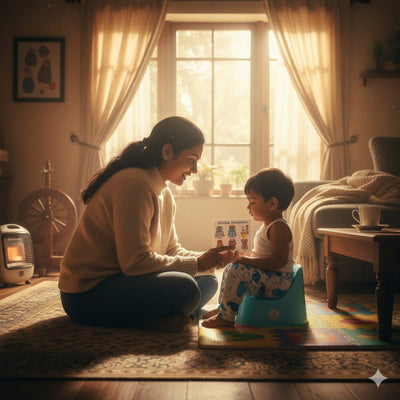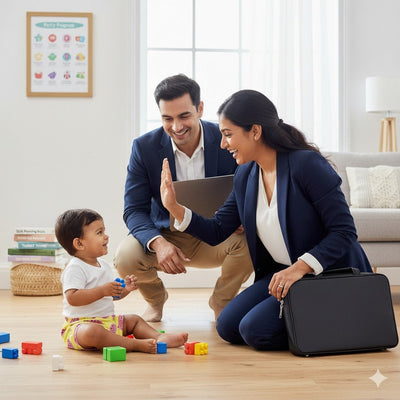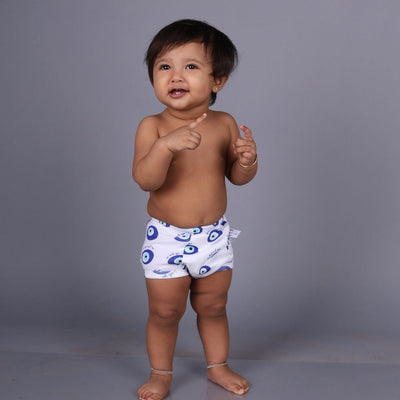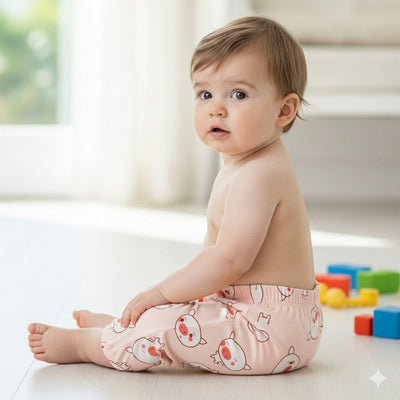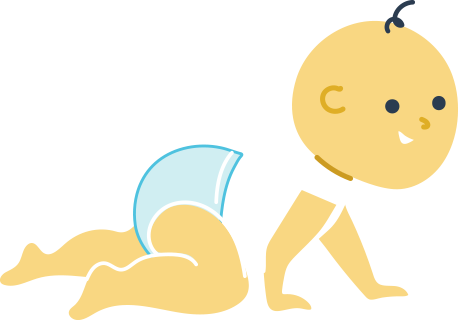5 Key Features to Look for in Potty Training Pants
Potty training marks a major developmental milestone in a child’s life and a defining parenting moment as well. It’s a time filled with pride, progress, and yes, a few puddles along the way. As exciting as it is to see your little one take their first steps toward independence, this stage also comes with its fair share of challenges, especially when it comes to managing accidents, understanding routines, and encouraging new habits.
That’s where the right gear becomes essential.
One of the most practical and supportive tools during this phase is potty training pants, also known as padded underwear. These are specifically designed to help toddlers transition from diapers to regular underwear by offering a middle-ground solution: they provide enough absorbency to contain small accidents while still allowing your child to feel when they're wet, an important cue in the potty training process.
Not all potty training pants are created equal. From the fabric and fit to absorbency and design, the right features can make the journey easier, cleaner, and much more effective for both toddlers and their caregivers. The goal is to choose a product that supports your child physically and emotionally during this learning curve.
1. Just-Right Absorbency to Build Wetness Awareness
One of the main reasons parents switch from diapers to potty training pants is to help their toddler start recognising when they’ve had an accident. This recognition, also known as wetness awareness, is a key step in successful toilet training.
Unlike diapers, which are designed to keep your child feeling dry for hours, padded underwear has light, built-in absorbency. This absorbency is intentional: it soaks up small leaks or dribbles to prevent major messes, but it doesn’t eliminate the wet feeling. That slight dampness helps your toddler connect the dots.
This feedback is essential in teaching bladder control. It helps children become more conscious of their body’s signals and motivates them to act on the urge to go, rather than ignore it. Over time, this leads to better timing, fewer accidents, and more trips to the toilet.
The benefit for parents has less mess than regular underwear and more progress than diapers. It’s the perfect middle ground, providing enough protection to avoid constant cleanup, while still offering a learning experience for the child.
Here’s how just-right absorbency in training pants helps:
Reduces full outfit changes: Small leaks are absorbed, so you’re not dealing with soaked clothing or puddles every time.
Minimises over-reliance on diapers: Your child learns they can’t rely on high absorbency to cover up accidents.
Builds independence: With awareness comes control, and with control comes confidence. Your toddler starts taking pride in dry days.
When shopping for potty training pants, look for those that mention layered absorbency, typically a few layers of cotton or other soft fabric, with a semi-waterproof lining to contain light moisture. This combination supports both learning and cleanliness without confusing your child by keeping them too dry.
2. Easy to Pull Up and Down for Independent Use
During potty training, independence is key. Toddlers should be able to pull their underwear up and down without help, especially during those last-minute dashes to the potty.
Choose potty training pants with a pull-up style and stretchy, soft elastics at the waist and thighs. This design mimics regular underwear and helps toddlers practice dressing skills while feeling confident.
Snugkins here with a snug yet gentle fit that doesn't leave red marks on delicate skin, making them comfortable for all-day wear.
3. Comfortable, Breathable Materials for Daily Use
Your child will likely wear potty training pants all day, so comfort is non-negotiable. Soft, breathable fabrics like cotton keep your toddler cool, prevent rashes, and allow for flexibility as they play, run, and explore.
Avoid stiff or synthetic materials that may cause irritation or overheating. Natural, skin-friendly fabrics help keep your little one happy and focused on learning rather than adjusting to uncomfortable underwear.
4. Leak-Resistant Design Without Bulk
While training pants aren’t meant to replace diapers, they should offer enough leak protection to avoid frequent outfit changes. Look for underwear with a semi-waterproof lining, typically made from TPU (thermoplastic polyurethane). This thin layer helps trap moisture and keeps outer clothing dry even when accidents happen.
What’s important is that the pants remain slim and flexible, not bulky like a diaper. A good fit ensures your child can move comfortably while staying fully protected.
5. Secure Yet Gentle Waist and Leg Elastics
One of the most overlooked but essential features in potty training pants is the quality of the elastic at the waistband and leg openings. These elastics play a critical role in keeping the underwear snug, leak-resistant, and comfortable for your toddler.
Potty training pants should fit close to the body to prevent leaks, especially around the thighs. However, if the elastics are too tight, they can leave red marks, dig into the skin, or even discourage your child from wearing them.
On the other hand, if the elastics are too loose, you risk leaks, bunching, and slippage, especially during active play or while your toddler is trying to pull them up and down themselves.
Final Thoughts
Potty training marks an important step in your child’s journey toward independence. It’s a process that requires time, patience, and a lot of encouragement, not just for your toddler, but for you as a parent too. Every child progresses at their own pace, and having the right tools can make the journey more manageable, less messy, and even enjoyable.
One of the most essential tools in this phase is choosing the right potty training pants, or as many call them, padded underwear. These aren’t just mini versions of diapers or regular underwear; they’re a smart, functional in-between solution that helps toddlers feel more independent while still offering just enough protection against accidents.
When selecting training pants, it's important to look beyond just the basics. The right pair should encourage wetness awareness, be easy for tiny hands to pull on and off, provide comfort throughout the day, and make your child feel confident and excited to wear them.
That’s where Snugkins Padded Underwear stands out.
Snugkins understands what parents truly need during potty training: reliability, comfort, and reusability combined with fun prints that toddlers love. Their thoughtfully designed training pants help bridge the gap between diapers and underwear, empowering your little one to take ownership of their potty habits in a fun and supportive way.
Whether your child is just starting or in the final stages of toilet independence, Snugkins makes the experience easier, cleaner, and more confidence-building for both of you.
FAQs About Potty Training Pants
1. Are potty training pants reusable?
Yes! Cloth-padded underwear like Snugkins can be washed and reused multiple times, making them eco-friendly and budget-conscious compared to disposable alternatives.
2. How many pairs do I need during potty training?
It's ideal to have 6 to 8 pairs on hand. This ensures you always have clean ones available, especially in the early stages when accidents are more frequent.
3. At what age should I start using potty training pants?
Most parents begin around 18 months to 3 years, depending on the child’s readiness. Signs include staying dry for longer periods, showing interest in the toilet, and being able to pull pants up and down.

